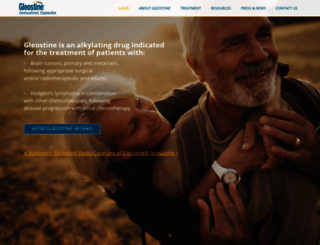Gleostine® | For Patients with Brain Cancer or Hodgkin's Disease
Page Load Speed
2.9 sec in total
First Response
664 ms
Resources Loaded
2 sec
Page Rendered
238 ms

About Website
Welcome to gleostine.com homepage info - get ready to check Gleostine best content right away, or after learning these important things about gleostine.com
Gleostine® (lomustine) is an alkylating drug indicated for the treatment of patients with primary and metastatic brain tumors and/or Hodgkin's lymphoma.
Visit gleostine.comKey Findings
We analyzed Gleostine.com page load time and found that the first response time was 664 ms and then it took 2.2 sec to load all DOM resources and completely render a web page. This is quite a good result, as only 45% of websites can load faster.